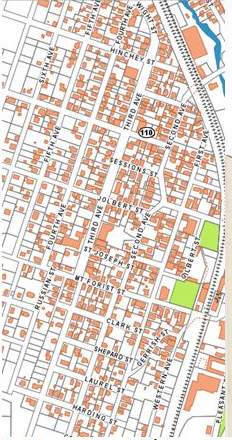
Includes 1st through 5th Avenues, Wight, Hinchey, Madigan, Hamlin, Jolbert, Mt. Forest, Shepard, Laurel, Harding, Russian and Petrograd Streets (the latter two streets around the Russian Orthodox Church)
The Avenues, in the southwest part of Berlin, is named for the seven avenues (First to Seventh), which run north/south through the neighborhood, roughly parallel to the river. A majority of the development in the Avenues occurred between the early 1890s and late 1920s. This corresponded to a period of rapid expansion in Berlin related to the booming paper industry and resulting increases in population. Many residents went to work in the Burgess Mill (on the east side of the river) which opened in 1895 or the Cascade Mill located at the southern end of Berlin (straddling the boundary between Gorham and Berlin) which opened in 1904. The street railway (1902), which ran parallel to the river (on Main Street) between Berlin and Gorham, for the first time allowed commuting from further than walking distances. All of these developments contributed to the growth of The Avenues.
The Avenues was subdivided by two groups, the Berlin Heights Addition Land Company (1892-3 Plans D-G) and the Green Aqueduct and Land Company (Plan B & C 1893 and 1894). The Berlin Heights Addition Land Corporation consisted of Dr. Frank Colby, lawyer Herbert Goss, surveyor and engineer W.C. Perkins, and landowner Catherine Green (who originally owned the land). The Green Aqueduct and Land Company, which laid out the tract south of Mount Forist Street, consisted of a different group of investors (though the same engineers). The developers included Abraham Stahl (1854-1941) a German immigrant who owned a dry goods store and was a part owner of the Sinclair-Stahl Lumber Company. (He was also the first president of the Berlin Bank and Savings which opened in 1891.) John B. Noyes, another investor, was a neighbor to the Greens, the chief of police and sheriff and later a bank president.
The actual build-out of the neighborhood was the product of numerous independent efforts rather than the work of a few speculative builders (Sanborn 1901-1950). The pace, character, and concentration of development in The Avenues was influenced by geography and population pressures. Because of their closer proximity to the downtown area and relative flat topography, First through Third Avenues and the lower cross streets were the earliest and most heavily developed. This area was the most diverse in terms of uses and building types. A hospital was located on First Avenue, a shoe factory was located on Green Street (demolished), the Methodist church was at Mt. Forest & First and Bartlett School was located on Second Avenue.
Builders and homeowners in The Avenues overwhelmingly embraced the model of a single, freestanding, wood-frame building on each house lot, with air, light, and a small amount of land on all sides. Multifamily dwellings in The Avenues are almost exclusively two- or three-family structures arranged with a single living unit on each floor. Many multifamily dwellings in the neighborhood were constructed between 1910 and 1920, a period which coincides with a 60 percent rise in the population in the neighborhood and a 32 percent rise in overall population within the city (Sanborn 1901-1950, Bureau of the Census 1900-1930).
In terms of population, The Avenues was a mixed ethnic neighborhood. Its largest immigrant group was consistently French-speaking Canadian, followed by English-speaking Canadian, then British Isles (English, Scottish, Irish). Over time, the number of others groups such as Italians, Russians, Russian Jews, and Scandinavians increased. By 1900 there were more foreign-born than natives in The Avenues; a majority of these were French Canadians.
One ethnic group came to have a permanent physical relationship with the neighborhood. In March 1915, Fr. Arcady Piotrowsky and 139 Russian immigrants banded together to form Berlin’s Russian Orthodox Church. With the help of the Burgess Sulphite Fiber Company (in the person of Superintendent Robert B. Wolf) and the Brown Company (through owner Orton Bishop Brown), just two months later, work began on the church building on Petrograd Street in The Avenues. The paper companies apparently supplied labor to clear the site and assist in the construction. The companies may well have been interested in supporting a Russian church in Berlin to promote American values and to counter potential labor upheavals.
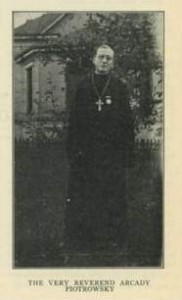 |
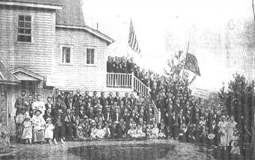 |
John Bergesen, architect for St. Nicholas Russian Orthodox Cathedral in Manhattan was responsible for the Church’s traditional six-onion-dome design. The church was dedicated October 10, 1915. On the interior, the panels of the altar partition hold Russian icons sent to the United States by Czar Nicholas II in 1915, shortly before the Russian Revolution.
For awhile after the construction of the Russian Orthodox Church, more Russians families were attracted to The Avenues: the population of Russian immigrants went from two in 1910 to 82 in 1920. Many lived on Third (Broad) Avenue. Most Russians, however, did not end up staying in The Avenues, or in Berlin. By 1920, the number of Russians began to plunge due largely to the poor economic conditions at the mills. Russians had the misfortune to have arrived right before the Great Depression and were “the last hired first fired.”
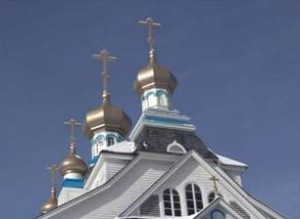 |
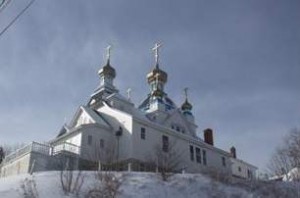 |

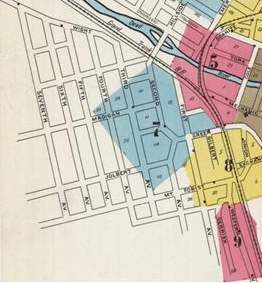

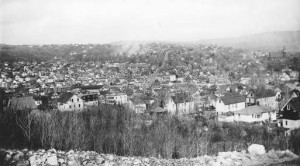
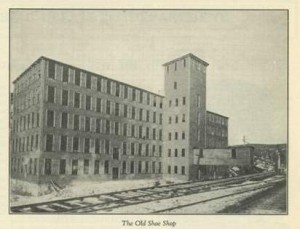


 Follow
Follow